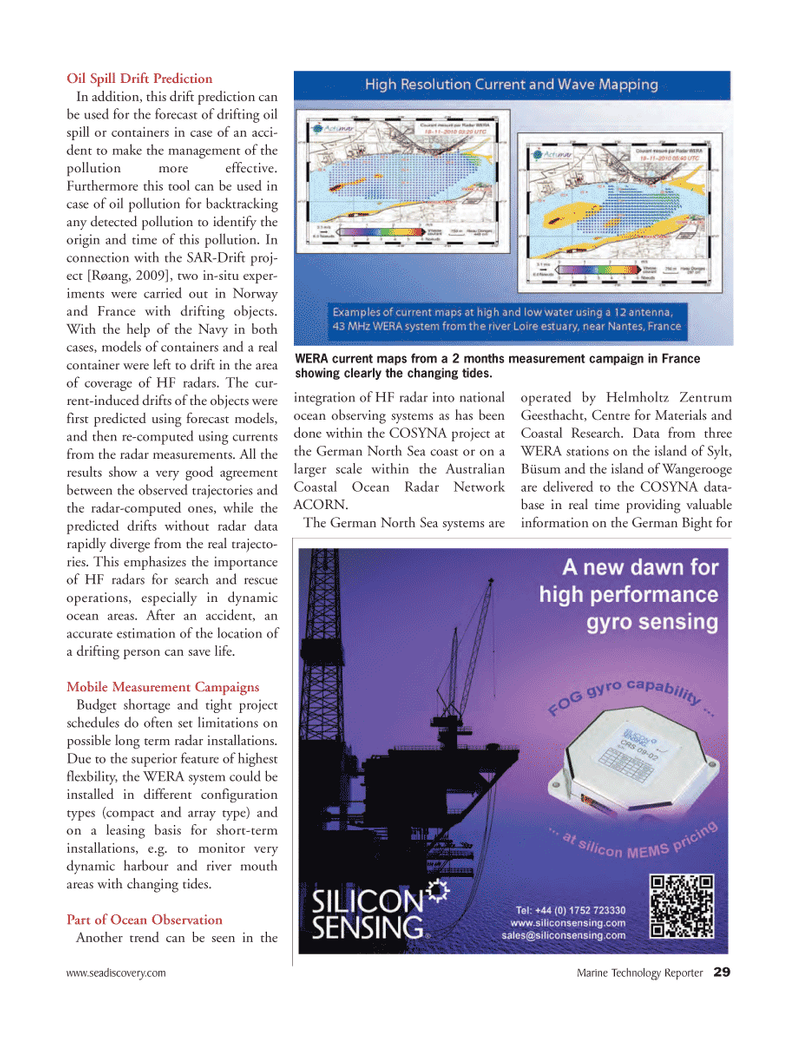
Page 29: of Marine Technology Magazine (September 2011)
Ocean Observation
Read this page in Pdf, Flash or Html5 edition of September 2011 Marine Technology Magazine
www.seadiscovery.com Marine Technology Reporter 29Oil Spill Drift Prediction In addition, this drift prediction can be used for the forecast of drifting oilspill or containers in case of an acci-dent to make the management of thepollution more effective. Furthermore this tool can be used in case of oil pollution for backtrackingany detected pollution to identify theorigin and time of this pollution. In connection with the SAR-Drift proj- ect [Røang, 2009], two in-situ exper-iments were carried out in Norway and France with drifting objects. With the help of the Navy in both cases, models of containers and a real container were left to drift in the area of coverage of HF radars. The cur- rent-induced drifts of the objects were first predicted using forecast models, and then re-computed using currents from the radar measurements. All the results show a very good agreement between the observed trajectories and the radar-computed ones, while thepredicted drifts without radar data rapidly diverge from the real trajecto- ries. This emphasizes the importance of HF radars for search and rescue operations, especially in dynamicocean areas. After an accident, an accurate estimation of the location ofa drifting person can save life. Mobile Measurement Campaigns Budget shortage and tight project schedules do often set limitations onpossible long term radar installations.Due to the superior feature of highest flexbility, the WERA system could be installed in different configuration types (compact and array type) andon a leasing basis for short-term installations, e.g. to monitor very dynamic harbour and river mouth areas with changing tides. Part of Ocean Observation Another trend can be seen in the integration of HF radar into nationalocean observing systems as has beendone within the COSYNA project at the German North Sea coast or on a larger scale within the Australian Coastal Ocean Radar Network ACORN. The German North Sea systems are operated by Helmholtz Zentrum Geesthacht, Centre for Materials and Coastal Research. Data from three WERA stations on the island of Sylt, Büsum and the island of Wangerooge are delivered to the COSYNA data- base in real time providing valuable information on the German Bight for WERA current maps from a 2 months measurement campaign in France showing clearly the changing tides.MTR#7 (18-33):MTR Layouts 8/30/2011 9:07 AM Page 29

 28
28

 30
30
